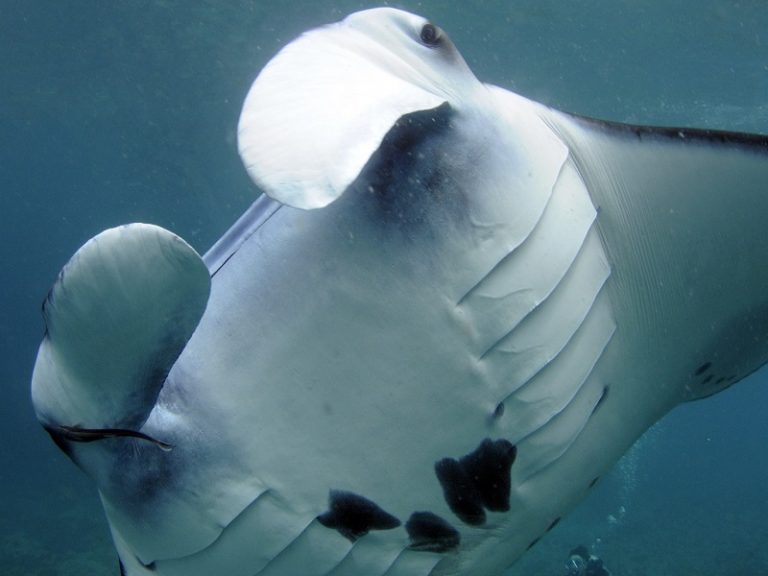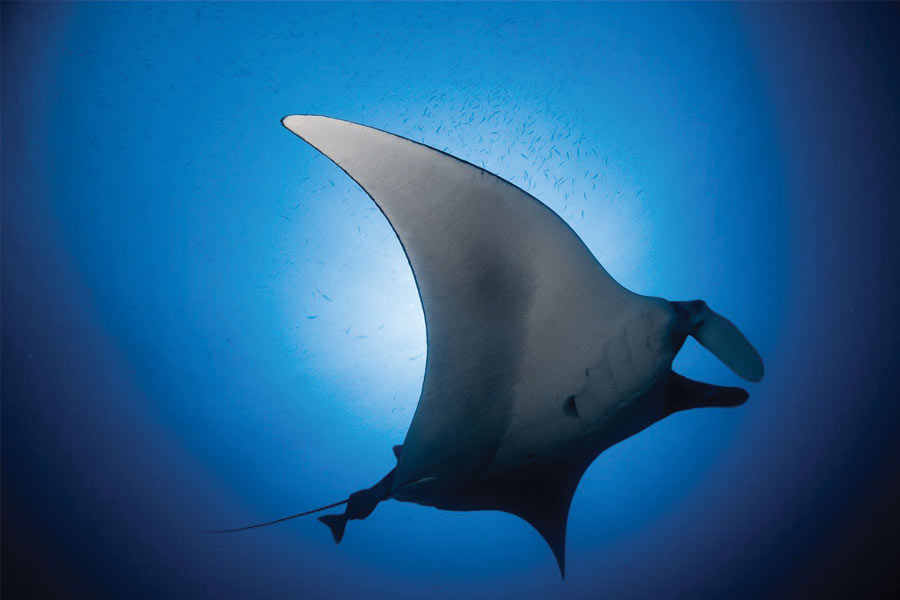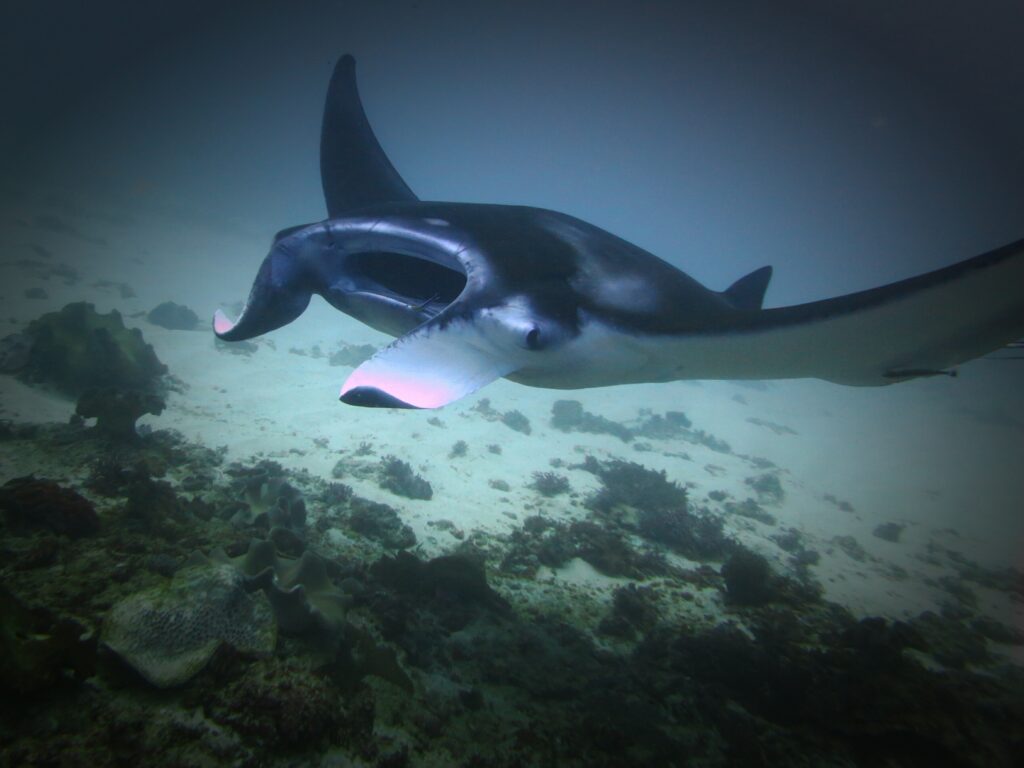Diving with manta rays is one of the most sought-after underwater experiences in the world.. These graceful giants glide effortlessly through the water, leaving divers in awe as they coast by. Nusa Penida, located off the coast of Bali, Indonesia, is one of the best places on the planet to see these incredible creatures. According to the Manta Trust, populations of manta rays are distributed in tropical, subtropical, and temperate waters, but the best encounters are often found in protected marine areas like those around Bali. Read on if you’re curious to find out how you can swim with them!

What Is a Manta Ray?
Let’s take a trip back to highschool biology. Manta rays belong to the Mobula genus and are closely related to sharks and other rays. Historically they have been in their own genus “Manta”. However, based on their morphology and genetics they belong in genus Mobula with devil rays. Known for their massive wingspan, mantas are filter feeders and are completely harmless to humans. Their unique appearance and majestic swimming patterns make them a favorite among divers and snorkelers.
What Species of Manta Rays are in Nusa Penida?
Nusa Penida is home to reef mantas (Mobula alfredi), one of the two recognized manta species (the other being the giant oceanic manta, Mobula birostris). Reef mantas are smaller than their oceanic cousins but are more commonly seen along coastlines and shallow reefs. Nusa Penida is one of the best places to spot them, especially at cleaning stations and feeding grounds.
How Big is a Manta Ray?
Reef mantas, which are commonly seen around Nusa Penida, can grow up to 5.5 meters (18 feet) across, while the larger oceanic manta can reach up to 7 meters (23 feet). Despite their massive size, these gentle giants are known for their calm and slow-moving nature, which makes diving with them quite epic.
What Do Manta Rays Eat?
Manta rays are filter feeders, which means they swim through plankton-rich waters, filtering tiny organisms like plankton, small fish, and microscopic crustaceans through their gills. Their feeding method involves swimming with their mouths open, creating a gentle and mesmerizing movement in the water. Manta rays often feed in areas where plankton have been pushed into bays by currents, which is why places like Manta Point in Nusa Penida are prime locations to spot them.
What is a Manta Ray Cleaning Station?
A cleaning station is a location where manta rays visit to be cleaned by small fish, such as wrasses, that eat parasites and dead skin from their bodies. These stations are essential for mantas to maintain their health. At Manta Point in Nusa Penida, you can observe these mantas hovering in the water while smaller fish clean them. It’s an incredible sight and offers divers a unique chance to witness this symbiotic relationship up close.

Are Manta Rays Dangerous?
Despite their large size, manta rays are completely harmless to humans. Unlike stingrays, mantas do not have barbs or venomous spines on their tails. They are gentle creatures that generally avoid human interaction. However, when encountered while diving, they may gracefully swim near, allowing for unforgettable moments underwater.
What is it like to Dive with Mantas?
Diving with manta rays is often described as magical. Seeing these graceful giants glide through the water is an awe-inspiring experience. Mantas are curious by nature, and they may approach divers, circling gracefully above or alongside them. It is still important to respect their space and follow responsible diving practices. Remember to maintain a distance and avoiding touching them. Manta dives in Nusa Penida typically take place at Manta Point, a popular site known for frequent manta sightings and cleaning stations.
Where Can I Dive with Mantas on Nusa Penida?
Nusa Penida offers several prime locations for manta ray sightings. There are many cleaning stations located around the island making it a prime spot to catch a view! The most iconic spot being Manta Point.
Manta Point
Manta Point is the most famous site for diving with mantas in Nusa Penida. Located on the southern coast of the island, this site is known for its cleaning stations, where mantas come to be cleaned by small fish. It’s a longer boat ride from the mainland, but it offers a higher chance of manta sightings and fewer crowds compared to other spots. The visibility is typically good, though conditions can be affected by strong currents.
Crystal Bay
While Crystal Bay is not as well-known for manta rays as Manta Point, it’s another excellent spot to dive or snorkel around Nusa Penida. The vibrant reef and possibility of seeing Mola mola makes it a popular dive destination. Mantas can occasionally be seen here, but this site is more famous for its incredible coral formations and other marine life.
Can I Snorkel with Mantas on Nusa Penida?
Yes, you can snorkel with manta rays on Nusa Penida, particularly at Manta Point and Manta Bay. These are some of the few places in the world where manta rays are easily accessible to snorkelers. However, the conditions can sometimes be challenging due to strong currents and waves, so it’s recommended that snorkelers are confident swimmers.
Whether you’re diving or snorkeling, encountering manta rays in the waters around Nusa Penida is a breathtaking experience. With the right preparation, you can enjoy one of the most incredible underwater adventures the ocean has to offer. With it being such a magical experience it’s no surprise why some choose to complete their divemasters course in Bali with these gigantic creatures. Why dive them once when you can stick around and see them again and again!
Diving with Mantas is a true is a true treat that should be treasured. Once you get in the water with them you’ll understand exactly what all the fuss is about.





